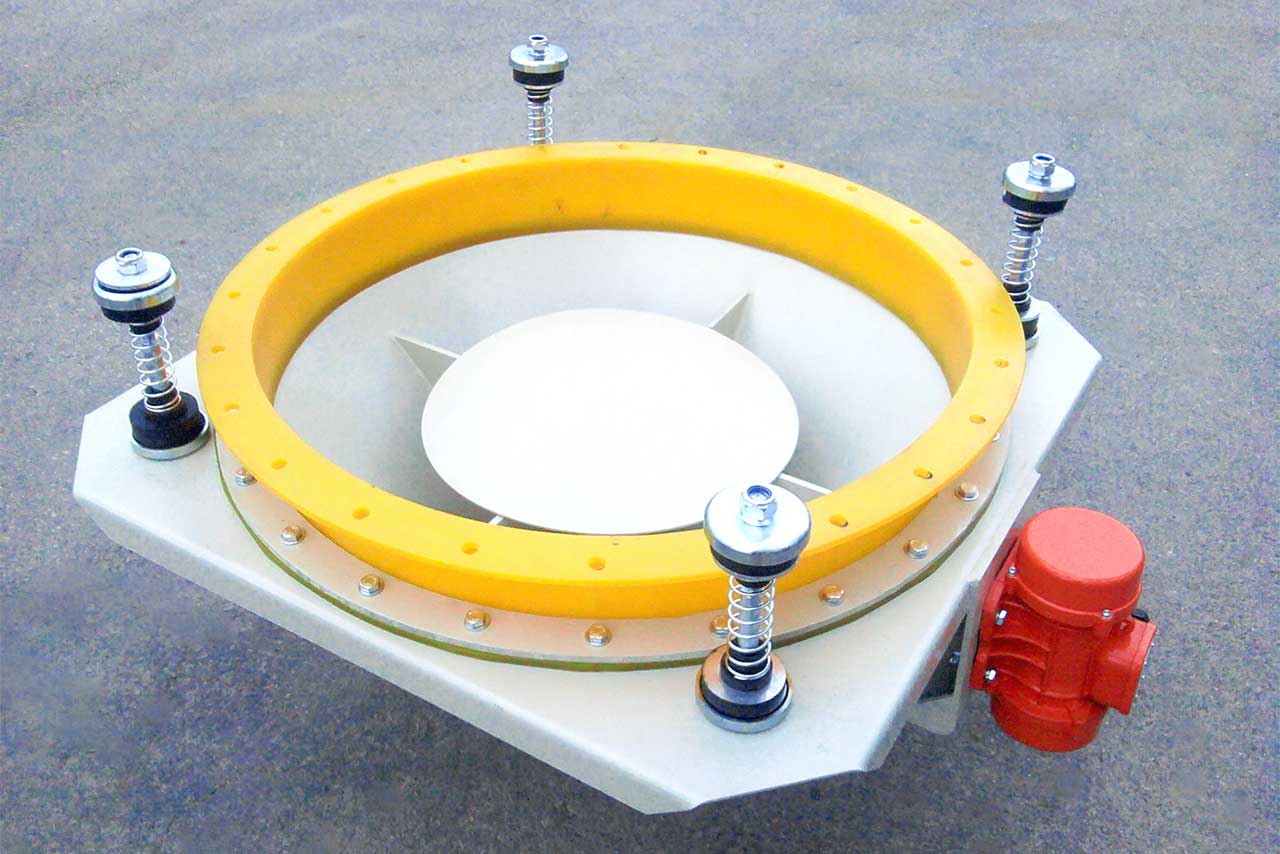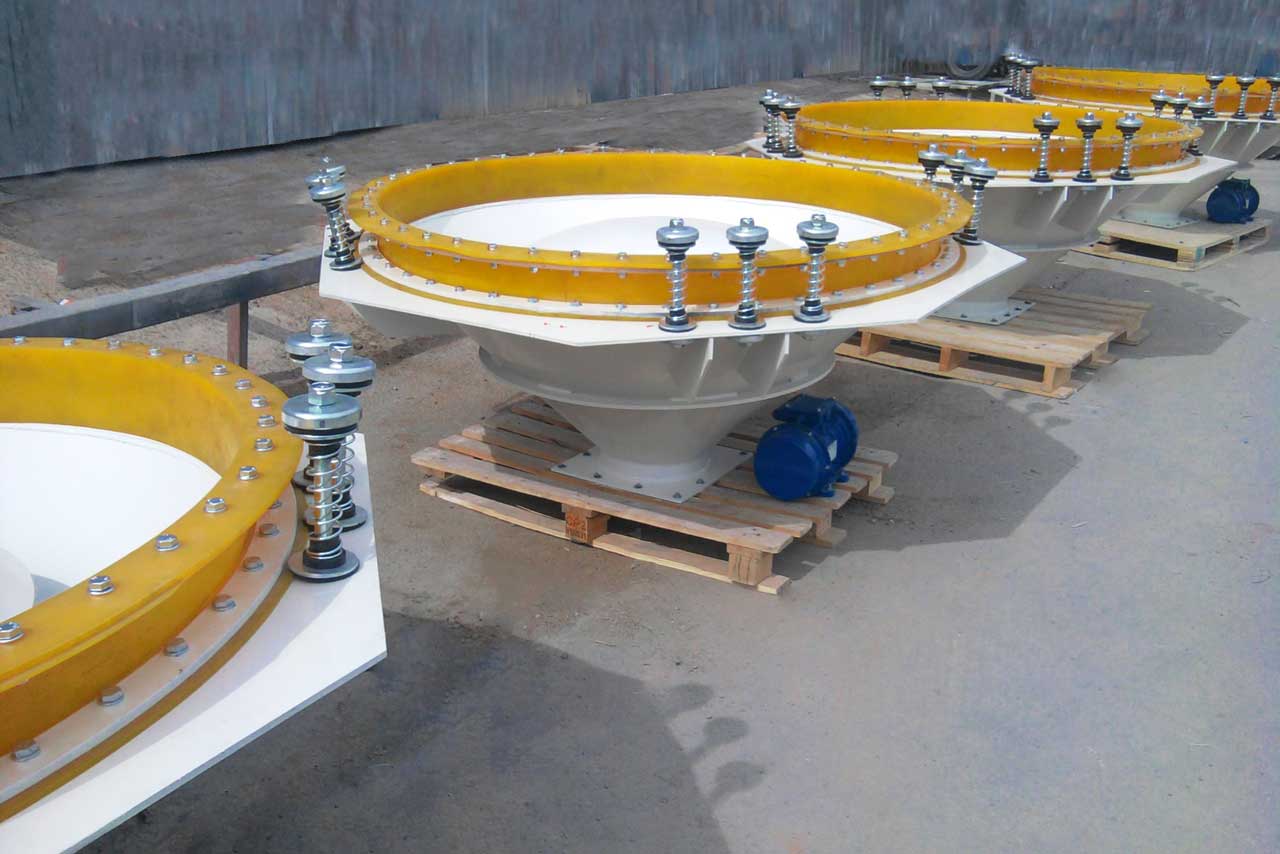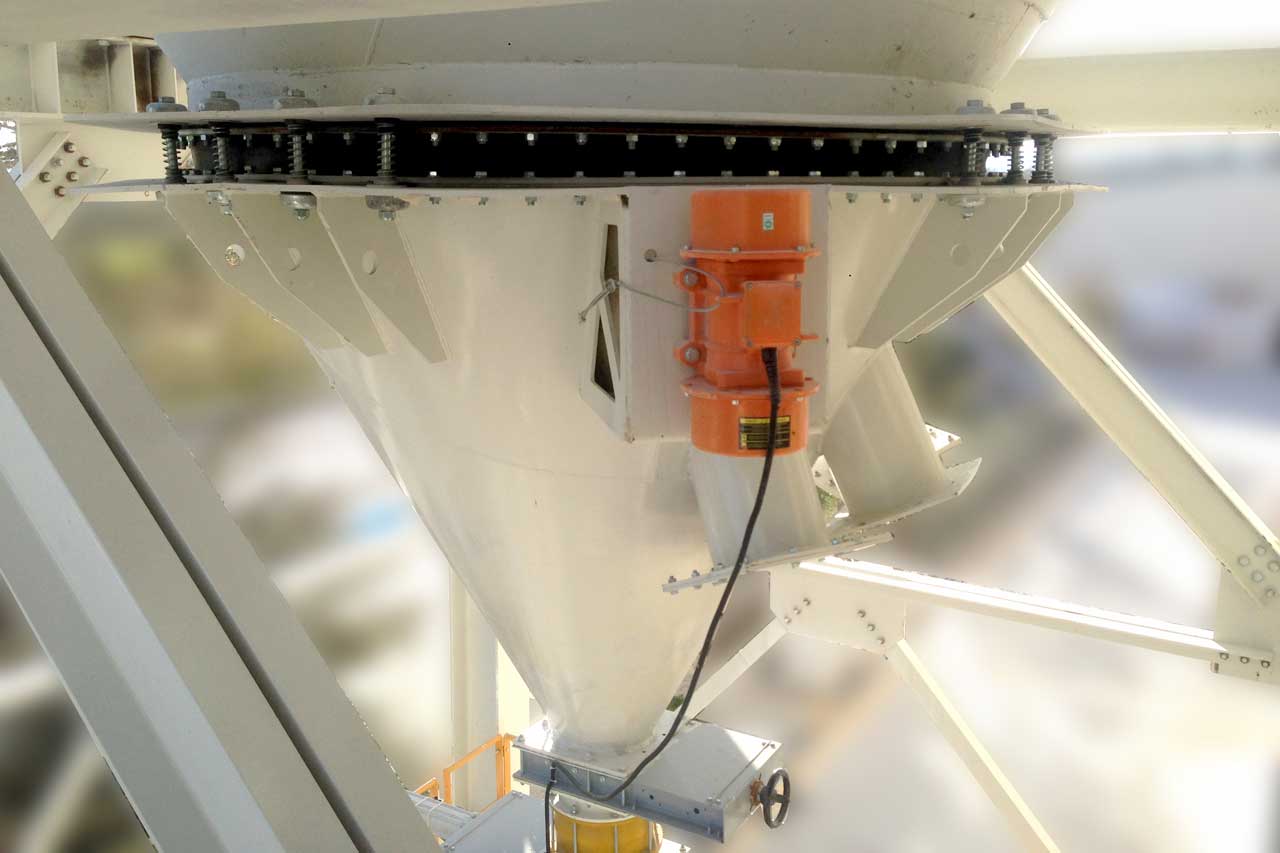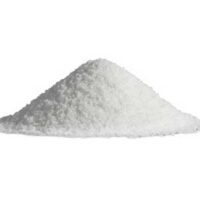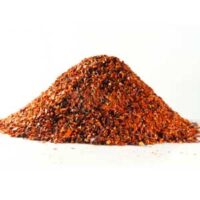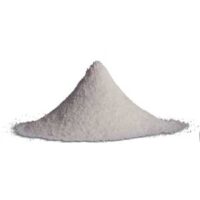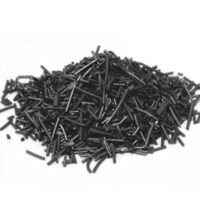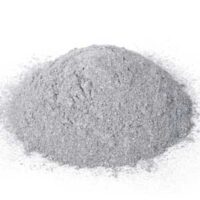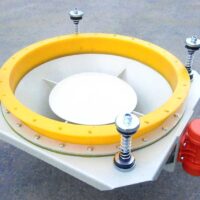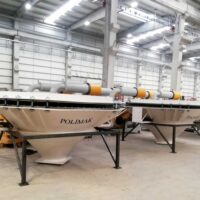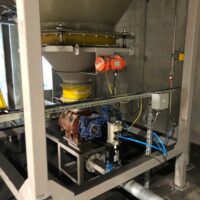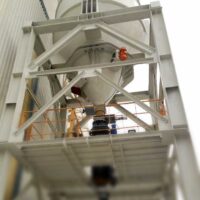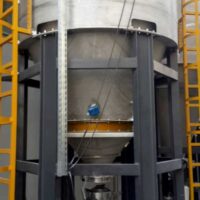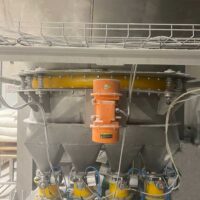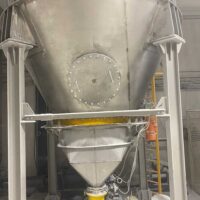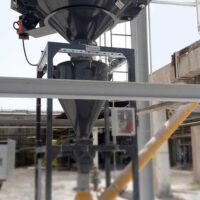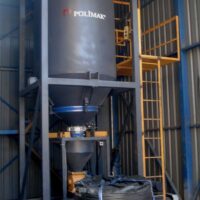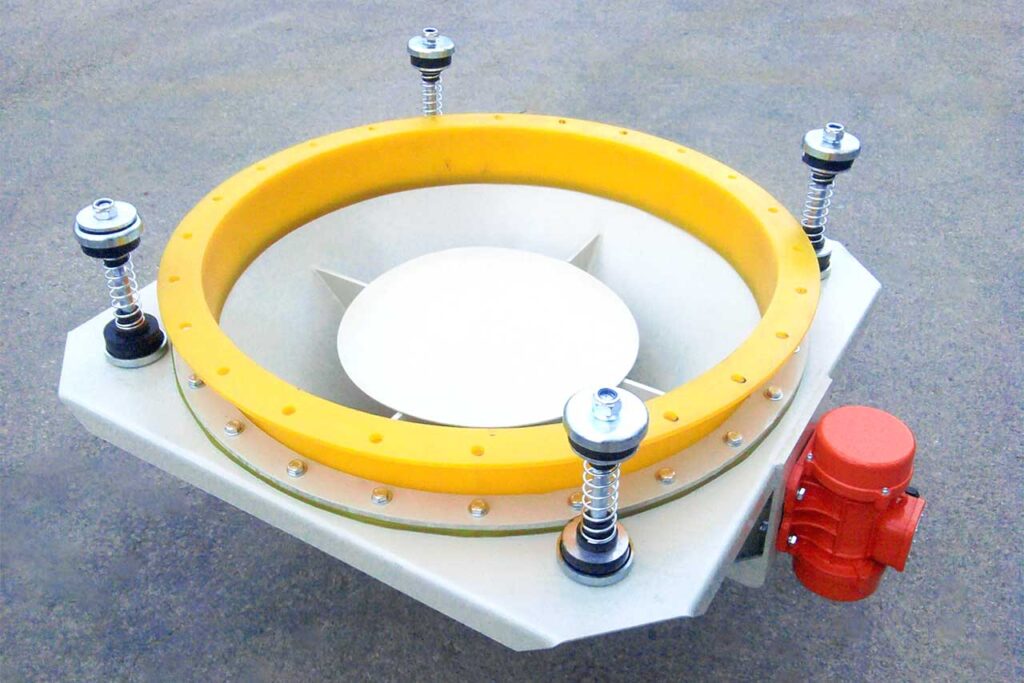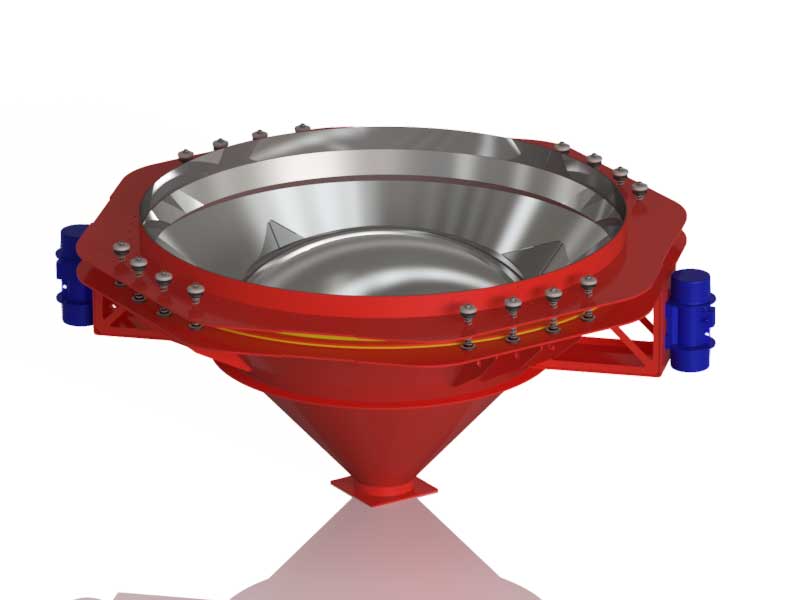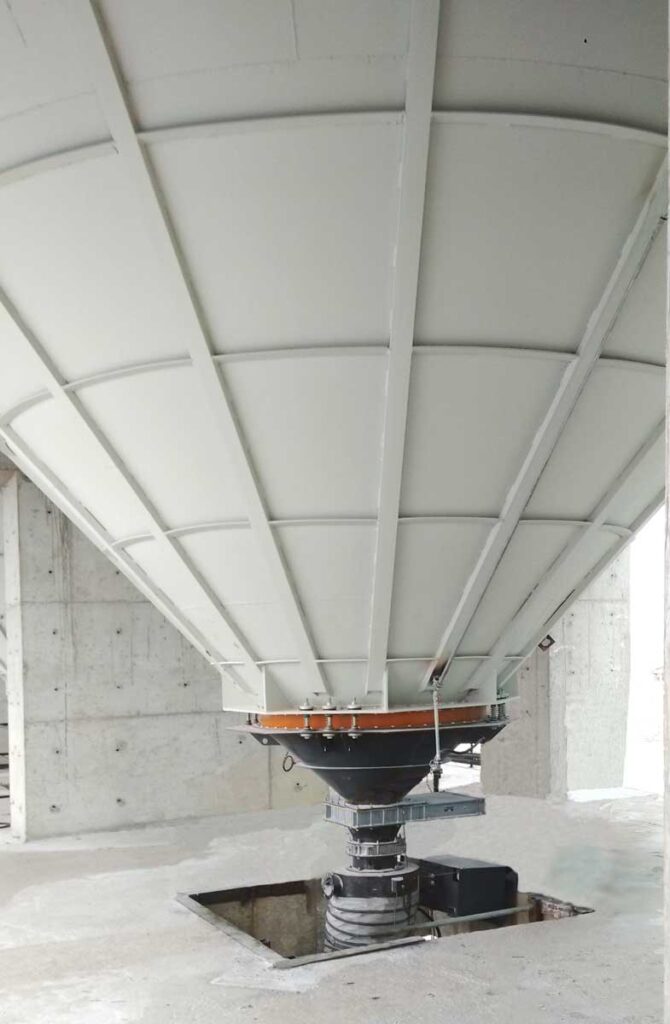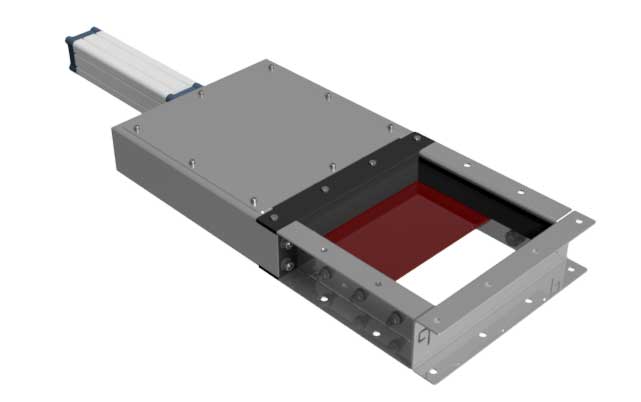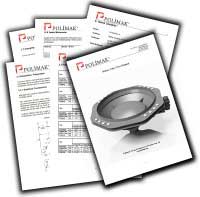Bin Activators are equipment conically shaped that aid dry bulk material flow from storage silos, or hoppers. Polimak Bin Activators are used in several industrial applications to efficiently discharge dry solid materials in powder or granular form from upstream equipment, thereby, reducing bulk material bridging or ratholing while promoting mass flow.
The fluidity of some dry bulk materials is at times so flawed that material discharge from the upstream equipment (silos, bins, etc.,) with flow aids such as pneumatic hammers, air cannons or even fluidised pads is not possible. The lack of fluidity introduces bulk material processing difficulties such as bridging, arching, or ratholing during the discharge of the material from upstream equipment. Shaking or hammering the bulk container to allow bulk material discharge might seem like something to consider but instead, this is a difficult and sometimes dangerous approach, especially when handling containers with large capacities. However, the bin activator also known as a vibrating bin discharger is one of the best flow aid and discharging equipment for such bulk materials because it renders the possibility of shaking the bulk material through vibrations without agitating the upstream equipment. This possibility is achieved with the help of an engineered polymer seal that forms a flexible connection between the bin activator and the respective upstream unit.
Bin Activator Features
Polimak’s engineering and production teams provide a vast range of industrially manufactured bin activators having different innovative features. Some of the significant design components of the equipment include the following:
Baffle Plate
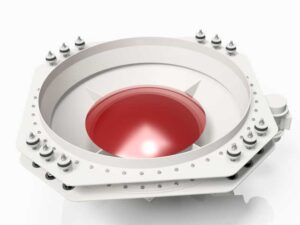
An internal tapered-conical shaped baffle plate is positioned at the diameter centre of the bin activator. The baffle is rigidly attached to the body of the equipment using structural steel parts. It facilitates bulk material flow from an upstream equipment by inducing vibrations directly to the material. A secondary deflector plate eases the weight of the bulk material from the lower portion of the bin activator by acting as a wedge below the material and thrusts it around the areas adjacent to the surface of the cone. Our baffle plates come in various configurations (convex plates and cone plates) and angles (15°, 30°, 45°, or even 60°) depending on the flow characteristics of the handled bulk material and type of application.
Engineered Polymer Seal and Suspensions
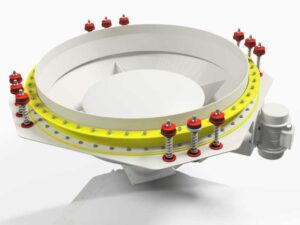 Special spring suspension links and an engineered polymer seal collectively form a flexible connection between a vibrating bin discharger and an equipment configured above it.
Special spring suspension links and an engineered polymer seal collectively form a flexible connection between a vibrating bin discharger and an equipment configured above it.
Proper design and installation of the polyurethane seal, prevents the seal from slipping off and the leakage of the dry bulk material. In addition, high-stress resistance and durability over time are guaranteed. These stresses are caused by motor vibrations, pressure conditions etc.
Spring suspensions externally installed to the system offer full resilience to the vibrations of the cone head. They ensure that generated vibrations do not agitate the upstream equipment structure rather than the cone itself.
Flange
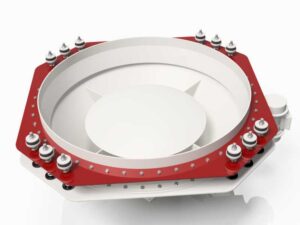
In order to fit a bin activator, a silo’s cone has to be shorter than usual. This leaves a wide outlet portion. A flange that is provided together with the bin activator is separately welded to an outlet (slightly above the outlet) of the silo on the production site. The vibrating bin discharger is bolted to the flange when installed to the silo.
Vibration Motor
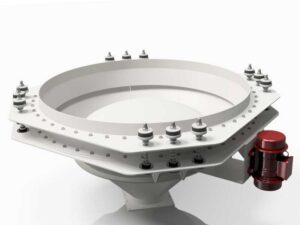
A vibratory motor is externally mounted to the bin activator. When powered, the electric vibrator causes the bin activator to vibrate which results in a steady flow of dry bulk materials within the system. One or two vibratory motors can be externally installed to the system.
Inlet Skirt
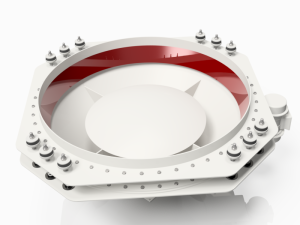 This is an option that we offer to help enhance the life span of the flexible connector sleeve. The skirt’s upper portion is attached to the outlet port of the upstream equipment and dangles down into and through a bin activator’s inlet port. The main purpose of the skirt is to act as a shield and render protection to the flexible connector seal.
This is an option that we offer to help enhance the life span of the flexible connector sleeve. The skirt’s upper portion is attached to the outlet port of the upstream equipment and dangles down into and through a bin activator’s inlet port. The main purpose of the skirt is to act as a shield and render protection to the flexible connector seal.
Bulk materials handled by bin activators
Depending on the handled dry bulk material, our vibrating bin dischargers are manufactured from carbon steel, stainless steel or other types of steel. Some of the bulk materials processed using our bin activators include starch, milk powder, wheat flour, sugar, salt, bran, coffee powder, spices, rubber powder, calcium sulphate, cement, aluminium hydrate, carbon black, soot, sodium sulphate, sand, calcium carbonate, dolomite, titanium dioxide, limestone, talcum powder, copper oxide, alumina etc.
Benefits of bin activators
Polimak’s bin activators are available in a vast range for handling various types of dry bulk materials stored in different vessels of different capacities. They render many advantages to the user industries. Some of the significant benefits our bin activators offer are:
- Complete resilience to the vibrating dish head provided by special spring suspensions.
- Flexible seal connections at the inlet and outlet to ensure safe connections.
- Excellent performance with low energy consumption.
- Easy to fit and low maintenance.
- High functioning efficiency.
- A housed motor in a single seal enclosure.
- Smooth discharge assurance.
Bin Activator FAQ
What is a bin activator?
A bin activator is an equipment with a tapered conical design that induces motion via generated vibrations to promote bulk material flow from storage silos or hoppers. During operation, the bin activator characterises a gyratory motion which is transmitted to the dry bulk material in the silo which results in smooth bulk material flow into downstream equipment.
How does a bin activator work?
The bin activator functions on the principle of convergence in relation to its shape – cone. The bulk solid material moves from a larger diameter inlet to a smaller diameter outlet of the bin activator when discharging the bulk material from upstream equipment (silo, bin etc.,) to downstream equipment (feeder, container etc.). During operation, mild vibrations of the bin activator generated by the synchronised vibrator and motor are transmitted to the dry solid material inside the silo resulting in fluent material flow through the bin activator into the connected unit. The system’s vibration levels can be easily adjusted. The motor is housed in a single seal enclosure with no belts to slip or break. The single seal enclosure ensures that there is no oil leakage, hence, preventing material contamination. Positive discharge is attained if the outlet is large enough and there is no downstream equipment to impede the flow of the bulk material. In addition to the outlet being large enough, a secondary baffle can be utilised. The secondary baffle helps prevent the jamming and compacting of the bulk material at the outlet.
What are the flow problems of stored bulk materials?
Flowability is the term that refers to the property of a bulk material which determines how well a bulk material flows from storage containers like silos or bins. It helps measure a particle’s movement freedom when subjected to a force, gravity in such a case. Dry bulk solids flow characteristics vary and can be classified according to their flowability – free-flowing, average-flowing or sluggish dry bulk solids. Free-flowing bulk solids are those in which their constituent particles possess low strength, that is, they possess low resistance to movement in relation to each other and have maximum freedom to manoeuvre independently when set in motion. Particles’ increased resistance to movement increases affects the bulk material flow, hence the terms; average-flowing dry bulk solids and sluggish dry bulk solids.
Loss of material flow from storage containers is generally due to common bulk material flow problems, namely, bridging or arching and ratholing.
What is material bridging and ratholing?
Bridging :
Bridging and arching are terms that are used interchangeably to describe an arch-shaped profile formed above the outlet of a storage container such that the flow of the dry bulk solid is stopped. Bridging in fine-grained bulk materials occurs due to the strength of the bulk solid which is caused by adhesion forces acting between the particles. In coarse-grained bulk solids, arching occurs because of particles interlocking and wedging.
Ratholing :
Ratholing is a term used to describe a funnel-shaped contour formed by bulk materials inside storage containers. It occurs when bulk solids discharge happens only in the flow channel situated right above the outlet of a silo or bin. It is caused because of the strength of the bulk material.
How can bulk material bridging and ratholing be prevented?
There are several ways used to alleviate bulk material flow difficulties from storage containers. A wide selection of flow aids for new or existing containers may be custom-made to address almost any bin flow issue. Bin activators, storage containers design and air fluidising nozzles are all options to aid condition bulk material flow and prevent arching and ratholing problems.
Bin Activator Photo Gallery
Links
Bin Activator
A vibrating bin discharger is a conical-shaped equipment that allows dry bulk materials to flow continuously by gravity. It is used to feed downstream equipment such as conveyors, hoppers, rotary feeders etc., installed to its outlet port.
Bin Activator Models
Our vibrating bin dischargers come in a broad variety to meet the economic demands and the diverse industrial application requirements. We deliver our equipment with a mounting flange that can be welded to the upstream equipment. These vibrating bin dischargers are available in ST37 carbon steel, hardox steel and AISI304 stainless steel.
Industrial Applications
The vibrating bin discharger is used in most industries that process dry bulk solids to discharge storage silos, bins etc., and feed downstream equipment such as conveyors, hoppers, rotary feeders etc. It helps prevent bridging, ratholing, or arching during bulk material processing. It is mounted to the upstream equipment’s outlet and the downstream equipment’s inlet.
Options And Accessories
We provide a wide selection of industrial production vibrating bin dischargers (or bin activators) with innovative options and accessories. These options and accessories ensure smooth and efficient operations as well as safe function over time.
Technical Documents
Technical catalogues, product brochures, installation, operation and maintenance manuals of bin activators.
